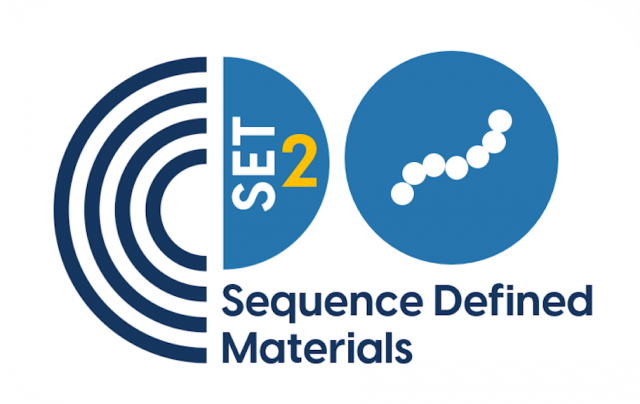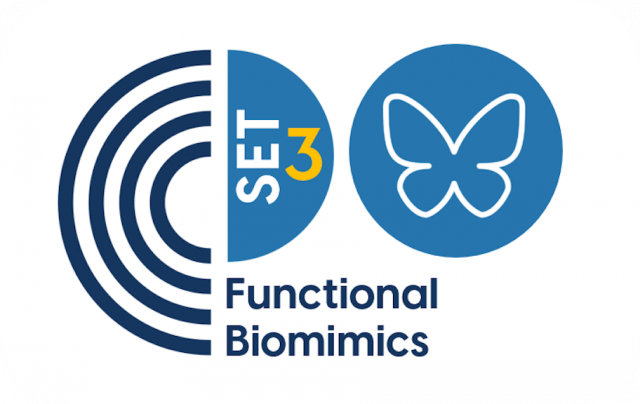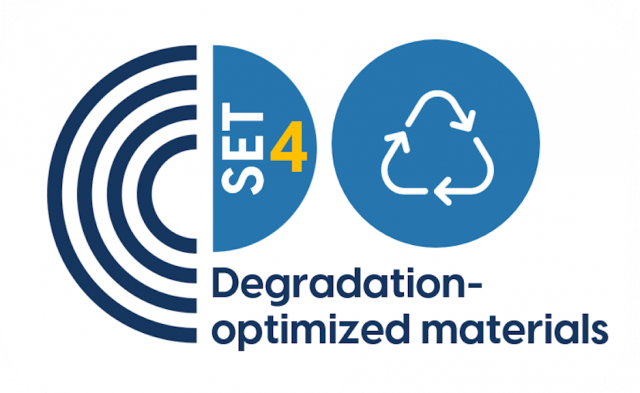In-house Research
The in-house research program at the BioPACIFIC MIP focuses on the integrated simulation, fabrication, and property characterization of tactic, sequence-controlled, or stimuli-responsive polymers synthesized from a library of chiral, regioselective, and functional bio-sourced monomers.
Synthetic biology in the automated and high-throughput Living Bioreactor Platform (focus at UCLA) produces monomers with stereospecific functional groups from yeast, fungi and bacteria that feed into an Materials Genome Initiative (MGI) based loop of hierarchical computation, automated polymerization and flow chemistry (focus at UCSB). Advanced characterization equipment suites (focus at both UCLA and UCSB) are used to study polymers with high thermal stability, chirality, water solubility, biological activity, as well as stimuli-responsive polymers prepared using automated synthesis facilities (focus at UCSB).
The MGI loop integrates state-of-the-art simulation tools in order to predict the properties of synthesized materials and systematically explore the design landscape of new chiral, regioselective, and functional bio-sourced monomers. Simulation is tightly integrated with structure-property relationship determination to guide molecular-level engineering and chemical formulation toward specific materials targets. A key goal at BioPACIFIC MIP is to provide an understanding of how bio-based materials assemble and carry out function.
Synergistic Exploratory Thrusts
The BioPACIFIC MIP in-house research program is organized into four Synergistic Exploratory Thrusts (SETs).
SET 1 – Bioderived Materials
Engineering biological systems to discover, optimize and produce new monomers and to develop and apply new biological polymerization.

Nature has evolved exquisite biosynthetic machineries to produce valuable molecular entities, some of which are out of reach of synthetic chemistry. SET 1 focuses on the discovery, engineering and application of nature’s biosynthetic machineries to produce natural products, monomers and polymers with tunable properties. From individual enzymes to complex metabolic pathways, biological systems are investigated for expanding our molecular toolset and harnessed for effective production of functional molecules and materials. SET 1 also seeks to repurpose and evolve natural enzymes to catalyze unnatural polymerization processes, thereby further expanding nature’s diverse repertoire of polymerization biocatalysts.
SET 2 – Sequence-defined Materials
Development of sequence specific synthesis and the application of cryoEM and MicroED and multi-scale modeling to guide discovery.

SET 2 is a launch point for the development of cryo electron microscopy and electron diffraction as principal tools in understanding the self-assembly of soft materials, using sequence-defined polypeptoids as a model platform. The polymer systems of interest self-assemble into chiral superstructures with nanoscale to microscale features with no known atomic/molecular origin. SET 2 will focus on variables that influence supramolecular chirality in achiral peptoids, such as sequence length and monomer composition. These polymers will be probed by electron diffraction methods (MicroED) to understand their atomic level structure, ultimately leading to the discovery of the chiral sergeant in such systems. In its longevity, SET 2 endeavors to understand broadly the role of a small subset of molecular building blocks in sufficient detail, enabling control of macroscopic material properties at will.
SET 3 – Functional Biomimics
Mimicking the functionality of nature to discover and produce biomaterials with superior properties and performance.

Natural material systems have evolved over billions of years to achieve a broad spectrum of functions, including structural support, flexibility, and stimuli-responsiveness. The work of the SET 3 is focused on mimicking the functionality of nature to discover and produce biomaterials with superior properties and performance. Biological function is informed by investigations of living biological cells, tissues, and their interactions with extracellular matrices and biomaterials. This project investigates light-programmable chemistries integrated within flexible networks to achieve tunable and reversible mechanical and transport properties in functional biomimics. The team leverages BioPACIFIC MIP’s Additive Manufacturing resources and expertise to spatially pattern functional materials and rapidly screen for large dynamic ranges in material properties.
SET 4 – Degradation-optimized Materials
Developing new bio-derived monomers and high-throughput methods to monitor polymer degradation.

SET 4 will develop new bio-derived monomers and degradable polymers, coupled with novel strategies for facilitating and monitoring degradation. An emphasis will be placed on high-throughput methods and analyses to characterize polymer degradation in different environments, from dilute solutions to bulk samples subjected to a range of conditions. This project will touch upon each aspect of the design-build-test-learn cycle to yield insights into future manufacturing with an emphasis on sustainability.